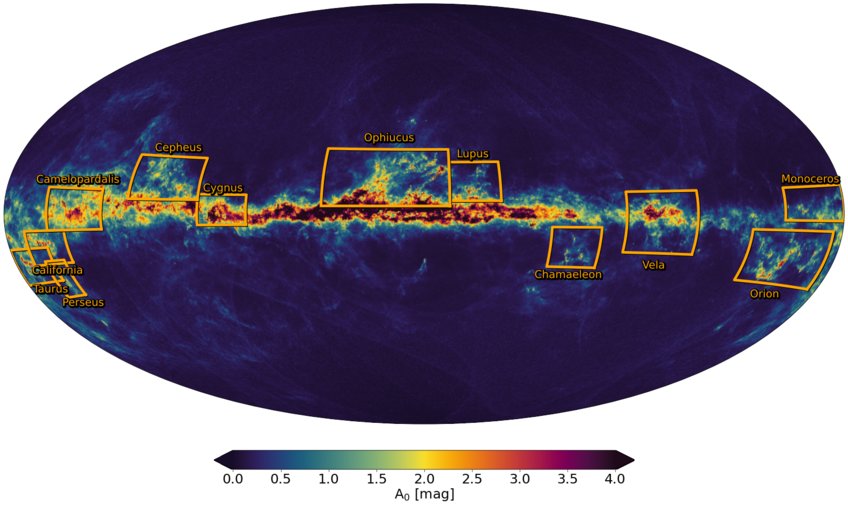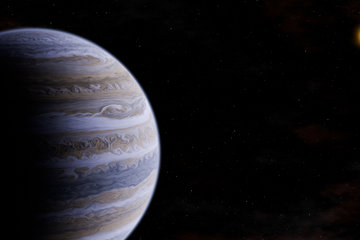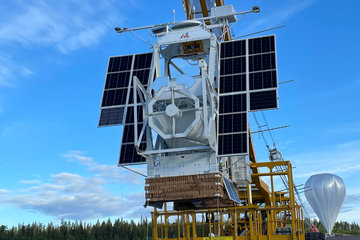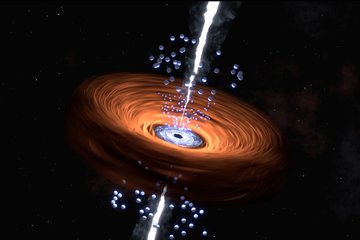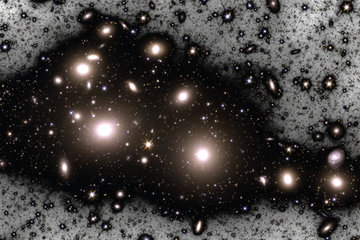Cosmic census
The European Gaia satellite has collected the most comprehensive data set to date
The European Space Agency's Gaia mission is publishing its third data release (DR3). The published catalogue of astronomical objects amounts to the most complete cosmic census to date, and is likely to have a decisive influence on astronomical research for years to come. Key information that is part of the survey, namely classification data that allows astronomers to readily search for objects such as stars, galaxies, or quasars, as well as physical information about stellar properties like temperature and chemical composition, were contributed by the Gaia group at the Max Planck Institute for Astronomy.

Given impressive images like those produced by the Hubble Space Telescope, it is no wonder that most people associate astronomical research with ever more detailed images of ever more distant astronomical objects. But one of the most productive astronomical observatories ever does not generally produce images, yet has led to over 6000 published papers with more than 150 000 citations.
The observatory in question is ESA's Gaia satellite, and the data it is producing amounts to numbers – numbers for stellar positions, distances, the brightness of sources in different filter bands with variations over time, all of this for billions of stars, and millions of other astronomical objects. Now, on 13 June 2022, Gaia is releasing the third full data set of its mission. The data set will be more extensive than previous versions; notably, for the first time, optical spectra for 220 million astronomical objects will be published along with position and brightness data.
The data set also includes contributions by the Gaia group at the Max Planck Institute for Astronomy, led by Coryn Bailer-Jones: astrophysical parameters derived from the observed data as well as object classifications that will make it easier for astronomers to use Gaia data in their research.
Gaia's main task was and is to determine accurate distances for billions of stars, using the so-called parallax method – based on the fact that, as the Earth makes its yearly orbit around the Sun, stars that are closer to Earth will shift their positions slightly relative to stars that are further away. (You can reproduce the same geometric effect by giving a "thumbs up", extending your arm forward, and then alternately closing one eye and the other – you should see how your thumb seems to "jump" relative to the more distant background.) Gaia's previous distance measurements have had a significant impact on astronomical research from mapping nearby stars to determining the expansion rate of the universe as a whole.
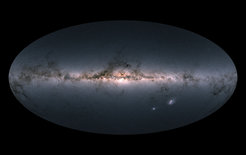
But as the new data release, dubbed DR3, makes abundantly clear, the impact of Gaia data goes far beyond distance measurements and their consequences. In effect, given the data it produces and the sheer number of objects observed, Gaia is creating the most complete cosmic census yet. Just as a country-wide database of age, living conditions, income, family size, and other information allows researchers to understand different aspects of a country's population, so Gaia data allows astronomers to gain an understanding of different classes of astronomical objects, from stars to galaxies.
In order to facilitate this kind of astronomical research, and to make it easier for astronomers to access the data they need for specific analysis tasks, Gaia is publishing more than just their basic observational data. For one, they are providing astrophysical parameters for many of their sources – such as temperatures or indicators of chemical composition ("metallicity" in astronomy-speak) of stars. They also provide information about object classes, indicating to users whether a given source is a star, galaxy, or quasar.
This is where Bailer-Jones's group at the Max Planck Institute for Astronomy is making a mark – the group was instrumental in developing the "Gaia classification machine", which uses statistical techniques to assign likely object classes to sources detected by Gaia. The group also developed algorithms that assign parameter values for temperature and chemical composition to both single and binary stars in the Gaia catalogue.
Their analysis also allows for the reconstruction of the amount of dust between a stellar source and Earth – just like dust reddens the sunlight at sunset or sunrise, cosmic dust reddens starlight in a characteristic way. The resulting three-dimensional map of dust in the Milky Way will in turn help astronomers who are observing within or beyond the Milky Way correct their measurements for the effects of dust.
Bailer-Jones says: "In this data release we, together with colleagues from other institutes across Europe, provide detailed information on the properties of hundreds of millions of stars. This is based primarily on the stars' spectra that Gaia measures, and these will complement the distance and velocity information that Gaia is providing."
By all indications, the Gaia DR3 catalogue, the most complete cosmic census yet, is likely to make a considerable impact on almost all areas of astronomical research. And all of that without a single published image, but by the power of more abstract data – extensive, well-curated, of consistently high quality, and accessible – alone.
Background information
The Gaia working group at the Max Planck Institute for Astronomy (MPIA) is funded by MPIA and by a grant from the German Federal Ministry for Economics and Technology via the DLR, the German Aerospace Centre.
The Gaia DR3 catalogue will officially be published on 13 June 2022. There will be numerous local events throughout Europe, all of which can be found here:
https://www.cosmos.esa.int/web/gaia/dr3-events
If you are a journalist interested in attending the event in Heidelberg at the Haus der Astronomie, please contact Stefan Jordan at jordan@ari.uni-heidelberg.de
The European Space Agency has prepared an extensive media kit on the Gaia DR3 data release, which is available here:
https://www.esa.int/Science_Exploration/Space_Science/Gaia/Gaia_data_release_3_media_kit
All ESA Gaia resources can be found here:
